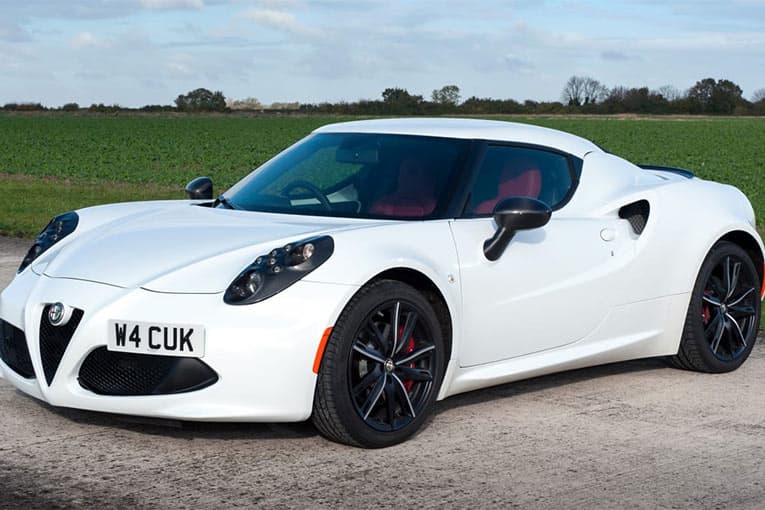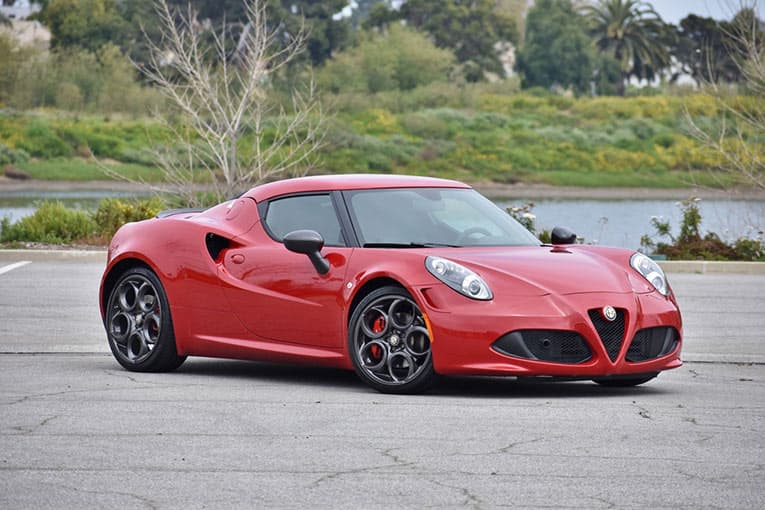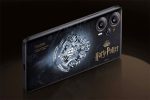The Alfa Romeo 4C was designed not only to be an exclusive car both for contents and performance, but also to become an achievable dream for Alfa Romeo fans all over the world. As a consequence, it was necessary to think in terms of limited production volumes, but still in the order of some thousands vehicles per year and, therefore, decidedly higher than those of the practically handcrafted production characterising this class.
The clean slate, which was initially free of design and manufacturing constraints, was soon assigned new parameters and presented with new challenges the first of which was a fundamental reference data point: a supercar weight/power ratio must be less than 4 kg/HP. To achieve the right ratio, Alfa Romeo designers could have focused on horsepower, but this would have impacted the purchase and maintenance costs, thus making the car significantly less affordable.
Instead they reduced the car’s weight by using materials where lightness is combined with efficiency and by perfecting, sometimes even creating, manufacturing processes where high technology is joined to craftsmanship. In this way they were able to obtain a total dry weight of just 895 kg, a true record that makes the 4C one of the lightest cars in the world. The 4C is lighter than a city car and its weight/power ratio is less than 4 kg/HP.

In order to achieve this ambitious goal a lot of attention was devoted to the materials, each of which was chosen on the basis of its specific weight as well as on the chemical-physical, mechanical and technological properties that best fulfil the performance requirements and dynamic behaviour needs of a sports car. The 895 kg of vehicle weight mainly consist of aluminium, steel, lightened SMC and carbon fibre.
Carbon fibre
The secret of the 4C Alfa Romeo lightness and dynamic behaviour lays in the use of 10% carbon fibre, which represents 25% of the 4C overall volume. At present, carbon fibre is the material offering the best weight/stiffness efficiency. This is the reason why it was chosen for the structural function monocoque that makes up the central, load-bearing cell of the chassis. This solution combines reduced weight and excellent performance, and is already adopted for the most advanced supercargo; the monocoque weighs just 65 kg.
The monocoque was entirely designed by the Alfa Romeo specialised team and manufactured by Adler Plastic by means of an innovative manufacturing process capable of joining state-of-the-art manufacturing technology and the manual craftsmanship typical of the Italian artisans. Thanks to this approach, the ‘pre-preg’ technology inspired by the Formula 1 was also transferred to standard manufacturing, so much so that Alfa Romeo is the only brand capable to assure a production of over 1,000 pieces per year.

‘Pre-preg’ carbon fibre processed in an autoclave with vacuum bag marked the passage from piece design to material design. The monocoque has reached stress and dynamic behaviour response levels that would be unthinkable with different technologies and materials. ‘Pre-preg’ carbon fibres may be arranged in an optimum structural direction in relation to the forces, thus producing a result that metal would only yield if layers were overlaid, shims differentiated, and reinforcements added.
In addition, the autoclave polymerisation makes it possible to manufacture box-section structures in one phase, whereas normally the production and assembly of various components often made of different materials is required. One example would be the door post. In its standard steel version, the door pillar is comprised of approximately 6 pieces assembled to one another and to the car body at different stages of the manufacturing process.
If autoclave polymerisation is used, the door post is a one-piece component included in the load-bearing structure. The monocoque is a carbon fibre one-piece structure and, as such, it resists external stress with a clear advantage in terms of dynamic behaviour.
Aluminium
The choice of materials characterised by high torsional rigidity and reduced specific weight is a common element to all of the 4C structural parts. An example in this sense is the use of aluminium for the roof reinforcement cage and the front and rear frameworks. Just as in the previous case, some interventions aimed at reducing the weight and increasing the stiffness of the component were made in the component design and manufacturing phases.

In particular, the designers replaced the traditional rectangular strut section with a newly designed section. In this way, they obtained lighter and, at the same time, safer frameworks. Frameworks are manufactured using the innovative ‘Cobapress’ process. Cobapress joins the advantages of fusion and the benefits of forging under press by compressing the aluminium alloy even further, thus removing any residual porosity. All this determines the component lightening to the advantage of its mechanical properties. In addition, thanks to the use of seam welding processes, the welding is very precise, the components are not deformed and the filling of the gaps is excellent.
Aluminium also plays the main role in the hybrid-type front brake discs with aluminium bell and cast iron ring gear. This patented technology developed by SHW guarantees up to 2 kg of weight reduction per disc in addition to better braking. Furthermore, the sophisticated surface finishing technology by brushing increases grip and pedal feeling whereas the innovative release system between disc and bell guarantees a more comfortable and safer braking. The difference in the thermal expansion coefficients of cast iron and aluminium is compensated by specific steel radial pins that accurately transmit the braking action.
SMC (Sheet Moulding Compound)
Using SMC (Sheet Moulding Compound), a low-density and high resistance composite material, for the body has allowed a 20% weight reduction in comparison with the traditional sheet steel. The Alfa Romeo 4C is the first standard production car to achieve such a high percentage of low-density SMC: with a weight of 1.5 g/cm³ this material is decidedly lighter than steel (~7.8 g/cm³) and aluminium (~2.7 g/cm³), besides being more malleable. This feature has allowed for the styling and design freedom that were necessary to create a true, instantly recognisable Alfa Romeo. Moreover SMC is a stable material which, unlike aluminium, does not strain in the event of minor impacts, has high resistance to chemicals and atmospheric agents, and also disperses noise very well to the advantage of acoustic comfort.

Finally, low-density SMC guarantees a good functional integration of the parts; this in turn entails a reduction in the number of components and operations, and requires shorter assembly times, thus lowering production costs.
PUR-RIM (injected polyurethane)
The PUR-RIM (injected polyurethane) was chosen for bumpers and wings for the same reasons described above. It is a lightweight material (it weighs 20% less than steel) suitable for creating very complex design elements, such as the 4C wing, and for keeping an ideal cost/production volume ratio.
Windows
In the search for the lowest possible weight, no material was ignored, not even glass. In the case of glass, the lightening was obtained by adopting a real silhouette-thinning approach: all the window glasses are on average around 10% thinner than those normally fitted on cars; this allows for an average weight reduction of 15%. The windscreen in particular is only 4 mm thick. This is an extraordinary result especially in consideration of the fact that this particularly aerodynamic shape is difficult to obtain on such thin glass.










